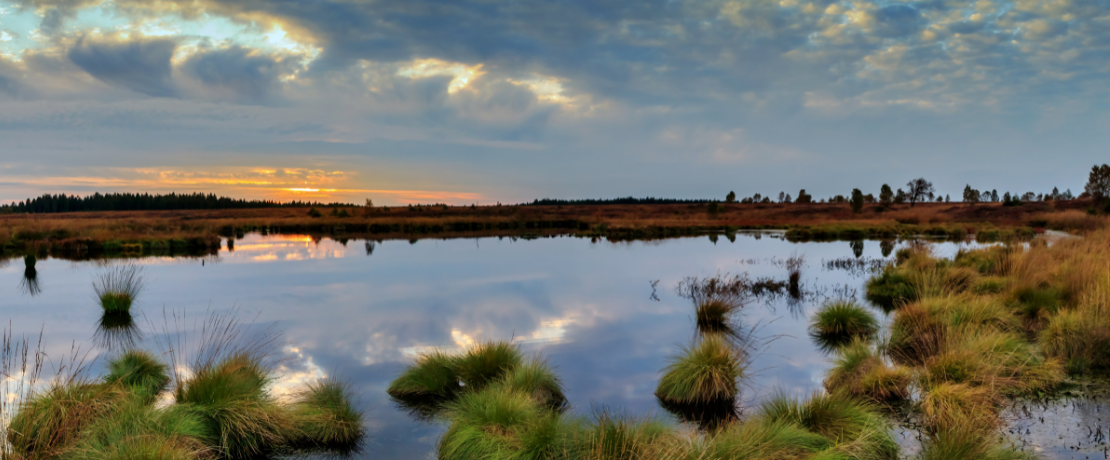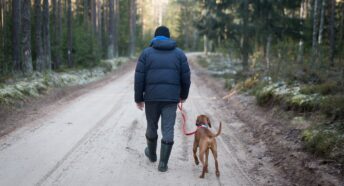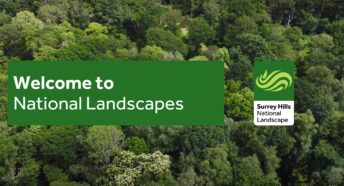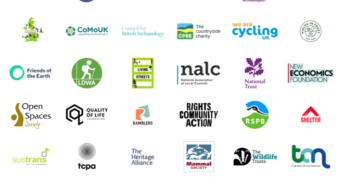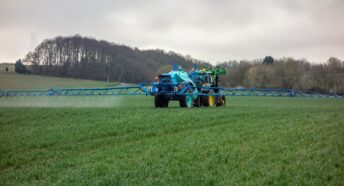Did you know… wetlands are excellent carbon sinks?
90% of the world’s wetlands have been degraded since the 1700s and wetlands are disappearing three times faster than forest, yet the unique ecosystem that wetlands provide are vital to human life on earth. From sequestering of carbon, to diverse plant and animal species there are many reasons why wetlands are an important part of our countryside here in the UK as well as across the world. World Wetlands Day is on 2nd February and a great time to raise awareness of the most effective carbon sinks on Earth.
What is a wetland?
An area considered to be a wetland is land that is either always covered with water or seasonally covered with water. An area of land that creates a unique habitat for species that have adapted to live in the wet environment. Wetlands can support lots of different wildlife, are found all across the world, and can be large or small. The London Wetland Centre has a guide to the different types of wetlands which explains over 10 different habitats.
Why are wetlands important?
Wetlands are not only important in terms of the diverse species of plants and animals that they support but they are also key to our survival thanks to the variety of benefits to our ecosystem that they provide. Wetlands across the world provide freshwater supply, food and building materials, biodiversity, flood control, groundwater recharge, and also mitigate the effects of climate change.
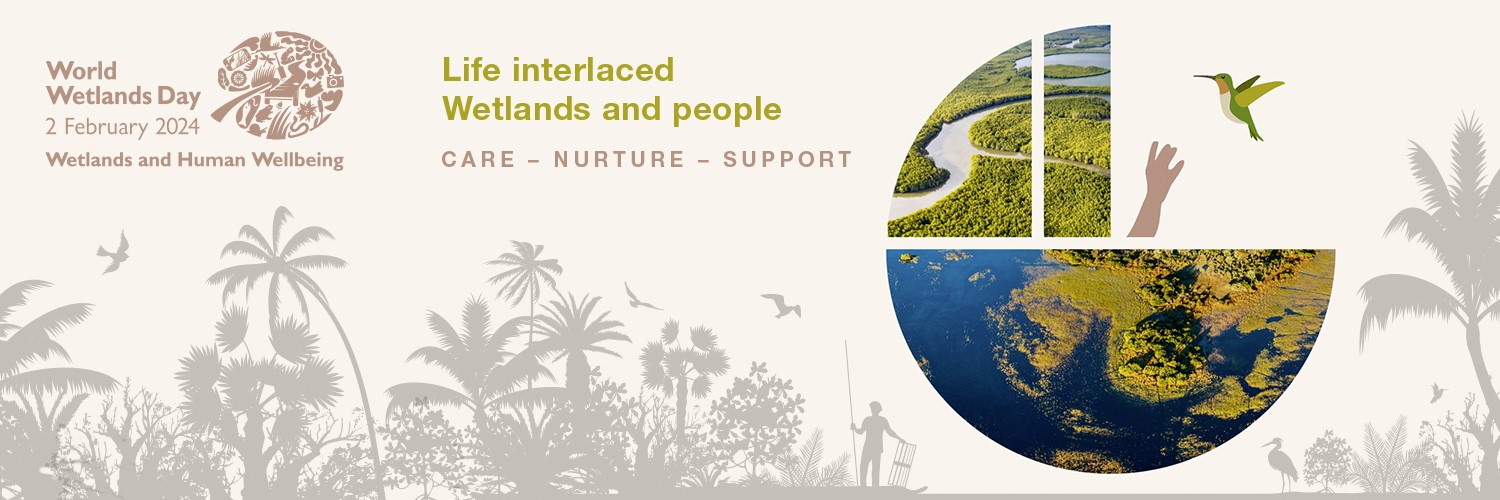
Every year on February 2nd World Wetlands Day aims to celebrate and raise awareness of the world’s wetlands in order to reverse their rapid loss and encourage communities to conserve and restore these vital ecosystems. The Secretariat of the Convention on Wetlands. Contracting Parties of the Convention on Wetlands have been celebrating World Wetlands Day since 1997 when it was first established. The Convention uses a broad definition of wetlands. This includes all lakes and rivers, underground aquifers, swamps and marshes, wet grasslands, peatlands, oases, estuaries, deltas, tidal flats, mangroves, and other coastal areas, coral reefs, and all human-made sites such as fish ponds, rice paddies, reservoirs, and salt pans. Nearly 90% of the world’s wetlands have been degraded since the 1700s and wetlands are disappearing three times faster than forests according to their latest figures.
For 2024 the theme of World Wetlands Day is “Wetlands and Human Wellbeing” and the focus is on just how interlinked wetlands are with human life. Many people draw sustenance, inspiration, and resilience from these most productive of ecosystems. All aspects of human wellbeing are tied to the health of the world’s wetlands and every wetland matters.
How do wetlands help with climate change?
Wetlands are a natural solution to climate change and play a significant role in balancing greenhouse gas emissions. They do this by naturally absorbing and storing carbon as they are the most effective carbon sinks on Earth. This is because wetland plants annually sequester a lot of carbon and the wetland ecosystem stores carbon in soil for a long time. Peatlands, mangroves, and seagrass in particular are great habitats that can store huge levels of carbon.
As well as having a direct impact on global warming, wetlands are also key to protecting us from the natural disasters and global effects of climate change as well as directly reducing air temperatures by up to 10 degrees Celsius. As wetlands work like sponges to store water they can help areas recover from extreme weather, floods, tsunamis, and cyclones. Inland wetlands such as flood plains, rivers, lakes, and swamps work by absorbing and storing excess rainfall in the time of heavy rainfall which can then be released in dry seasons to lessen the chances of drought. Wetlands found in coastal areas such as salt marshes, mangroves, seagrass beds, and coral reefs reduce the intensity of waves, storm surges, and tsunamis as they become like a shock absorber for the land, which in turn protects coastlines from flooding.
Where can I see wetlands in Surrey?
Many of the wetlands in our area are managed by The Surrey Wildlife Trust and have a variety of walking and viewing options to see unique habitats and the wildlife they support. Here are a few that you might want to explore on your next walk in the local Surrey countryside:
Nutfield Marshes is a stunning complex of wetland reserves with a myriad of birdlife and aquatic insects which lies in the vale of Holmesdale between the North Downs and the Greensand Ridge. There are four sites: The Moors, Spynes Mere, Holmethorpe Lagoons, and Mercer Country Park which were restored from sand extraction works along Redhill Brook.
Part of the Worplesdon group of commons, Whitmoor & Rickford Commons combine iconic heathland with patches of pine, birch, oak, holly, and hazel woodland. Around the wetter areas, there is a mix of heath and willow with an area of alder carr. The ponds are home to an amazing 19 species of dragonfly.
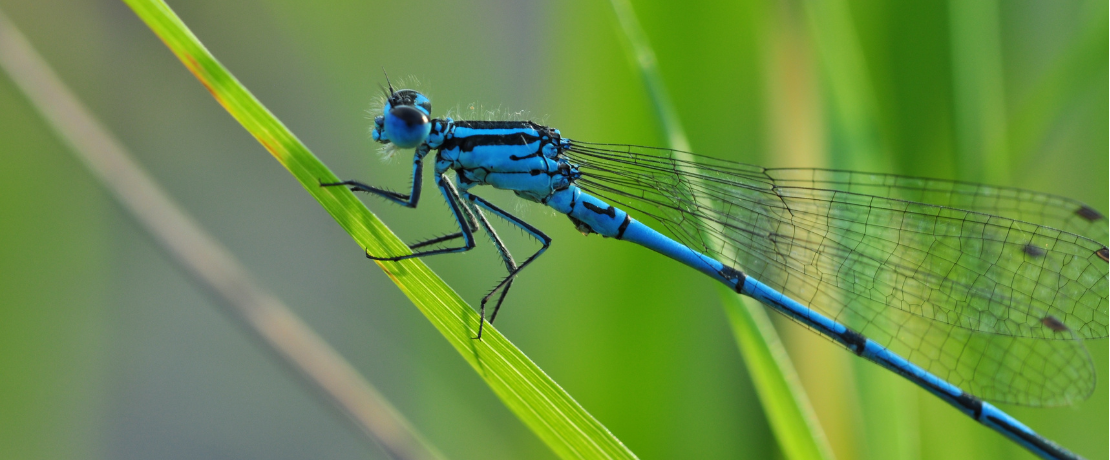
Papercourt Marshes are part of the larger Papercourt SSSI (Site of Special Scientific Interest) complex that lies on a floodplain between the village of Send and the River Wey. The mix of open water, marsh scrub, short herbage, and bare ground make a good site for aquatic plants and invertebrates but most visitors come for bird-watching.
Hedgecourt lake is an ancient mill pond about 800m long, which makes it the largest body of semi-natural open water in east Surrey. The lake itself is not part of the reserve, which runs along the west of the lake from where you might spot the twelve species of dragonflies recorded as well as several breeding birds including water rail, mute swan, sedge warbler, woodcock, tufted duck and kingfisher.
Newidgate Brickworks is located on the site of a former claypit and brickworks, a beautiful woodland and grassland reserve with six water bodies.
Further afield across the UK, there are lots of wetlands and soggier places to enjoy wildlife. CPRE, the countryside charity has a list which includes The London Wetlands Centre, who have been working to protect wetlands and save wetland species since the 1940s. Have fun exploring your local area and share your photos with us on social media via Facebook, Instagram, or X.
